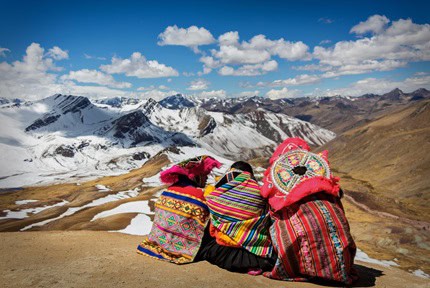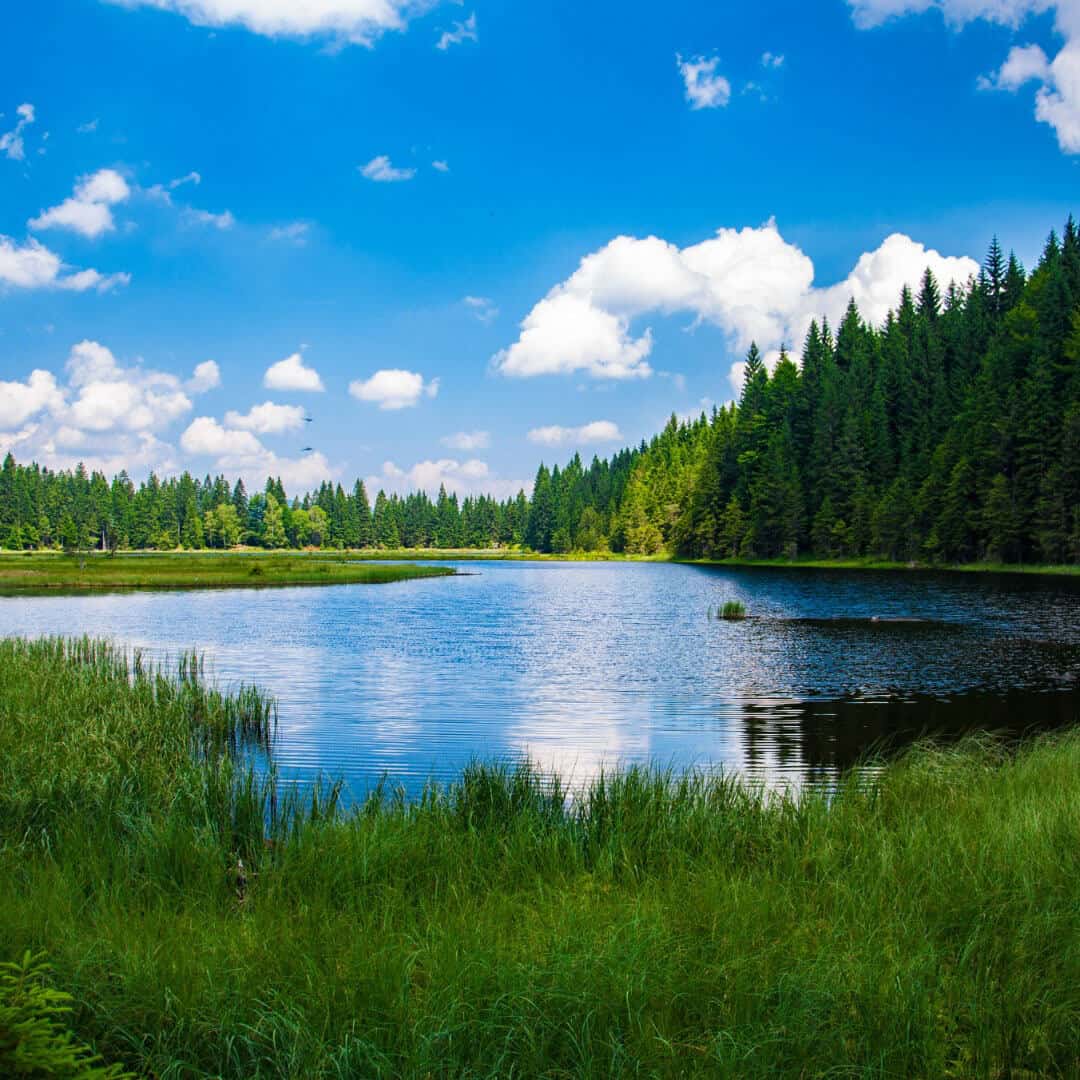

Peru Travel Guide
Best ways to experience Peru
Peru is arguably best known as the heart of the Inca empire, but the country’s true identity is more multifaceted than one might think.
Echoes of colonial Spanish are evident in everything from the language to architecture. Meanwhile, Peruvian cuisine blends indigenous, Spanish, African, and even Asian influences—all of which you might want to sample.
However, it helps to be selective so you can enjoy the attractions that match your interests. Here are a couple of recommendations:
- Discover Peru’s one-of-a-kind capital – Overlooking the Pacific Ocean lies Lima, the second driest city in the world—but you’re not likely to notice due to its thriving populace and varied attractions. The Miraflores Boardwalk has plentiful distractions, including key nightlife spots and restaurants representing the city’s culinary culture. Travellers should also stop by and see the Larco Museum’s impressive pre-Columbian art collection, plus some more unique oddities. Outside of Lima, you can adventure across the Paracas National Reserve and zoom across sand dunes or take part in full-day tours before making your way to Barranco, a quirky neighbourhood in the city with colourful destinations.
- Peer over the mysterious Nazca Lines – The arid landscape of Peru has preserved the Nazca Lines, grand geoglyphs dating back as early as 500 BC. The exact purpose of these geoglyphs is up for debate, but we do know that they invoke awe and wonder in those lucky enough to see them in person. If you’re interested, we recommend booking a small aircraft flight from the city of Nazca to view the geoglyphs from the sky. Alternatively, you can visit the designated foothills and appreciate the sprawling patterns from the ground.
- Journey to the once-lost city of Machu Picchu – We’d be remiss if we didn’t recommend Machu Picchu. Located in southern Peru, this UNESCO World Heritage Site was once an Inca citadel. While there, you’ll be mystified by the stone architecture and breathtaking mountain views of the Andes. To reach Machu Picchu, take a train from Aguas Calientes or partake in the 42-kilometre-long Inca Trail as ancient travellers once did. Note that Machu Picchu lies at a high elevation, so it’s important to acclimatise before your visit to avoid altitude sickness.
- Experience the majestic Colca Canyon – Another famous location in southern Peru is Colca Canyon, one of the deepest canyons in the world. The breadth and dynamic landscape of Colca Canyon create astonishing views for bird-watching, specifically of the Andean Condor, the largest living bird of prey. Cruz del Condor is a famous viewpoint to take in these creatures. Alternatively, you can hike to designated spots along the canyon, visit the remote villages, or stop by the famous La Calera Hot Springs near Chivay where the water is believed to have healing properties.
Visiting Peru
Climate
Peru’s climate is generally split into three regions. The first region, the coast, is notably dry and devoid of vegetation. However, it is fairly cool, averaging below 20°C annually.
Meanwhile, the highlands of Peru are influenced by the Andes. The weather is cool and grows colder at high elevations, with snow dotting the highest points. There is also a wet season (October to April) and a dry season (May to September).
Finally, the Amazon basin within Peru is tropical, wet, and hot. Anticipate rain throughout the year, waning somewhat from June through August.
The best time to visit Peru depends on the region, but May to October is ideal for most areas. This period falls during the dry season, offering clear skies and comfortable conditions.
Culture and language
Peru is an interesting blend of ethnic groups. For instance, the native foundations of Peru are evident across the country. You’ll see it in the music, traditional wear, textiles, and vibrant festivals celebrating ancient customs and beliefs.
Meanwhile, primarily Spanish influences echo throughout modern Peruvian society, including language. Most of the population speaks Spanish, but indigenous culture remains strong, with Quechua and Aymara being co-official languages.
English is also spoken, though not as widely. You’ll find most English speakers live in major cities like Lima. Beyond urban areas, you’ll have to rely on Spanish and your translation app. For a frictionless experience, consider investing in a few Spanish classes before your trip.
Be sure to also study up on local etiquette. For instance, Peruvians are a friendly and hospitable people. Many will happily help out tourists, but disrespecting Peru’s many historical sites is deeply frowned upon.
Getting around
There are several safe and reliable ways to get around Peru. If you’re interested in renting a vehicle and carving your own path, then you can use your Australian driver’s licence for the duration of your stay. You may also need an international driving permit to rent a vehicle.
Make sure you learn the local road laws. We advise driving only within major cities for your safety. If you choose to go cross-country, pay attention to travel advisories and never venture into dangerous areas.
Alternatively, you can take the train or bus. Trains in Peru can run slow, but they provide ample time to enjoy the sights. Buses are also popular as many can take you to the farther reaches of the country.
Furthermore, fares are generally inexpensive. Opt for reputable bus companies by booking ahead. Petty theft can be an issue on public transport, so never leave your personal belongings alone on public transportation or travel at night.
Accommodation
Accommodation in Peru is plentiful! Generally, hotels and hostels make up the most popular choices.
Hotels in Peru vary greatly in quality. You’ll find inexpensive options with bare amenities, as well as beautiful, high-end selections. Many hotels reside in old colonial buildings, offering a unique experience. For more modern amenities, choose familiar international or local mid-range chains.
Alternatively, if you’re travelling solo or on a budget, hostels are available in popular tourist destinations. As with any hostel in any country, it’s important to research the quality and safety before booking. Generally, however, you’ll uncover a great meeting ground of fellow travellers, many of whom can provide tips and tricks to explore Peru.
Entry requirements
Australians do not need a visa to travel to Peru. Upon arrival, you will receive a permit authorising a stay of up to 90 days. You may be eligible for an extension of up to 183 days. Overstaying will result in a fine.
You may need a yellow fever vaccination certificate to enter the country. It’s recommended to get the vaccine as you’ll need the certificate to re-enter Australia if you’ve been in Peru in the last 6 days.
That said, travel recommendations can change quickly. Stay up-to-date on the official Smartraveller website to learn more about entry requirements and travel alerts.
All benefits and covers are subject to the terms, conditions, limitations and exclusions listed in the Combined Financial Services Guide and Product Disclosure Statement (PDS) and on other policy documentation, including the schedule.
Peru travel insurance FAQs
It’s always a good idea to get travel insurance when travelling to Peru. That way, you know you have protection if something doesn’t go to plan. Whether it’s lost luggage, travel delays, trip cancellations, or unexpected medical or dental emergencies, a dedicated travel insurance policy is useful in many situations. Opting for a policy that includes instant claims also provides convenience so you can quickly cover the most common travel claims.
No. Many Australians don’t realise that they won’t be covered by Medicare when overseas. Purchasing travel insurance with cover for medical emergencies and evacuation is essential to ensure you won’t be left to foot the bill if you become seriously sick or injured while travelling.
The best way to find out how much it will cost to get cover to travel to Peru is to get an instant quote with PassportCard. It only takes a couple of minutes to get a personalised quote by providing some basic details such as your age, destination/s, travel dates and the level of cover you would like.
Not automatically. If you’re planning on doing any activities like cascading, deep sea fishing, mountain biking, mud buggying, paragliding, quad bike riding, outdoor rock climbing, segway tours or sky diving, you’ll need to add Optional & Adventure cover for these activities when you purchase your travel insurance to make sure you’ll be covered.
Simply call our Global Assistance team on +61 1800 490 478 or contact us on WhatsApp. Our Australian-based Global Assistance team is available 24/7 and can quickly handle most common claims on-the-spot over the phone.
Preparing for your trip to Peru
All set for your trip to Peru?
Make sure you’ve ticked all of these items off your checklist before you head off:
- Ensure that your passport is valid for at least 6 months beyond your intended departure date
- While in Peru, travellers must carry photo identification at all times
- Speak to your doctor to find out if you require any travel vaccinations. You will need a yellow fever vaccination certificate to re-enter Australia if you’ve been in Peru in the last 6 days
- Additionally, discuss with your doctor about what precautions you can take against dengue fever, Zika virus, and malaria, which are contractible in Peru
- Be aware of altitude sickness, especially in popular destinations such as Machu Picchu. Do not travel to high elevations if you’re at risk of complications from altitude sickness
- Do not travel in unlicensed or unofficial taxis as these may be scammers or thieves. Do not hail taxis from the street. Use dispatch services instead
- Watch out for petty and violent crime. Never leave your personal items alone in public areas or on public transport. Do not travel at night. Only stay at reputable accommodation
- Notify your financial institution of your plans to travel
- Set up a travel currency card or another payment option before your trip. While most places accept debit or credit cards, it’s a good idea to carry some Peruvian soles (PEN) in case of emergencies. Secure any cash on your person while travelling
- Contact your phone provider to ensure your phone plan will cover you while you’re away or purchase a prepaid international sim card
- Book tours, activities, and reputable accommodation in advance
- If you’re travelling solo, provide details of your travel plans to a family member or close friend so you can be contacted in case of an emergency
- Save emergency numbers and consular assistance contact details. Create safety plans and educate your children on what to do if you’re separated
- Organise your travel insurance with PassportCard.












